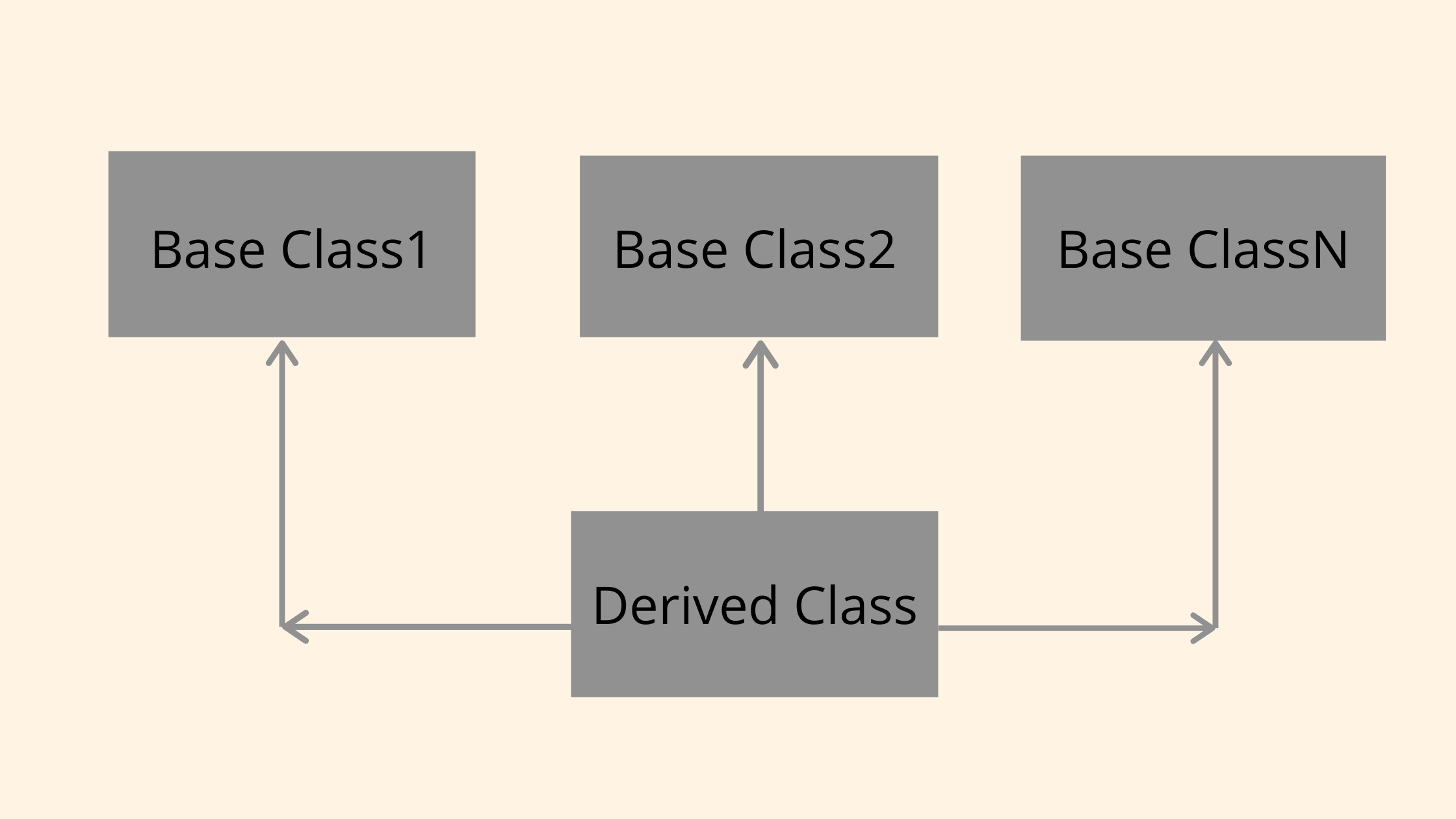Python is one of the most popular programming languages. Despite a transition full of ups and downs from the Python 2 version to Python 3, the Object-oriented programming language has seen a massive jump in popularity.
If you plan for a career as a Python developer, you are bound to have a higher payout. As the average salary for a Python developer is around $119,082 per year. But, before you go ahead with the Python learning program, here is something that you should know first- Inheritance in Python. Check out our data science certifications if you are eager to gain expertise in python and other tools.
Let’s first begin with what exactly is inheritance in Python?
What is an inheritance in Python?

Just like a parent-child relationship, inheritance works on derived classes relative to the base class. Every “Derived” class inherits from a “Base” class. The inheritance is represented in UML or Unified Modeling Language. It is a standard modeling language that includes an integrated set of diagrams to help developers specify, structure, and document software systems elements.
Inheritance relationship defines the classes that inherit from other classes as derived, subclass, or sub-type classes. Base class remains to be the source from which a subclass inherits. For example, you have a Base class of “Animal,” and a “Lion” is a Derived class. The inheritance will be Lion is an Animal.
So, the question is, what does the “Lion” class inherit from “Animal”?
A “Lion” class inherits
- Interface
- Execution
Note: You can replace the Derived Class objects with Base Class objects in an application known as the Liskov substitution principle. It indicates that if a computer program has object P as the subtype of Q, you can easily replace P with Q without altering the properties.
Also Checkout: Python Developer Salary in India
Advantages of Inheritance in Python
- Inheritance in Python helps developers to reuse the objects.
- Each time a class inherits the base class, it gets access to the parent object’s functionality.
- Reusability due to inheritance is also reliable as the base class is already tested.
- Low development time and cost
- Standardization of the interface across classes becomes easy.
- Reduces redundancy of code and help improve extensibility
- The creation of class libraries becomes easy.
Types of Inheritance in Python
Single Inheritance
We have already seen what single inheritance is- the inheritance of the “Derived” class from the “Base” class. Let’s understand it through an example,
class Country:
def ShowCountry(self):
print(“This is Spain”);
class State(Country):
def ShowState(self):
print(“This is State”);
st =State();
st.ShowCountry();
st.ShowState();
Multi-Level inheritance

Python is made of several objects, and with the multi-level inheritance, there are endless possibilities of reusing the class functionalities. Multi-level inheritance gets documented each time a derived class inherits another derived class. There is no limit to the number of derived classes that can inherit the functionalities, and that is why multilevel inheritance helps to improve the reusability in Python.
Here is an example of multilevel inheritance
class Animal:
def speak(self):
print(“Animal Speaking”)
#The child class Dog inherits the base class Animal
class Dog(Animal):
def bark(self):
print(“dog barking”)
#The child class Dogchild inherits another child class Dog
class DogChild(Dog):
def eat(self):
print(“Eating bread…”)
d = DogChild()
d.bark()
d.speak()
d.eat()
Our learners also read: Top Python Courses for Free
Explore our Popular Data Science Courses
Multiple Inheritance

Python enables developers to inherit multiple functionalities and properties from different base classes into a single derived class. It is mostly a great feature as it can allow you to inherit multiple dependencies without extensive tools or coding.
Let’s look at an example for multiple inheritances.
class Calculation1:
def Summation(self,a,b):
return a+b;
class Calculation2:
def Multiplication(self,a,b):
return a*b;
class Derived(Calculation1,Calculation2):
def Divide(self,a,b):
return a/b;
d = Derived()
print(d.Summation(10,20))
print(d.Multiplication(10,20))
print(d.Divide(10,20))
Check out all trending Python tutorial concepts in 2024
In the realm of Python programming, inheritance emerges as a cornerstone concept, empowering you to leverage the power of code reuse and establish well-organized class hierarchies. By inheriting attributes and methods from existing classes (known as base classes), you can streamline development, promote maintainability, and foster an intuitive object-oriented approach.
Delving into the Syntax:
Example of inheritance in python
The foundation of inheritance in Python lies in its straightforward syntax:
Python
class DerivedClassName(BaseClassName):
# class body
Here, DerivedClassName inherits from BaseClassName, allowing it to access and modify inherited members, thereby exemplifying class and inheritance in Python.
Here, DerivedClassName represents the class inheriting attributes and methods, while BaseClassName signifies the base class providing the inheritance blueprint. This simple syntax establishes a clear relationship, enabling the derived class to access and potentially modify inherited members.
Crafting a Parent Class:
The journey begins with establishing a parent class, serving as the foundation for future inheritance. Imagine creating a class named Animal to represent general animal characteristics:
Python
class Animal:
def __init__(self, species):
self.species = species
def sound(self):
print(“Animal makes a sound”)
This parent class sets the stage for inheritance, introducing a foundation upon which class Python inheritance can be demonstrated.
This Animal class defines an __init__() method to initialize the species attribute and a sound() method to represent a generic animal sound.
Introducing the Child Class:
Now, let’s create a Dog class that inherits from the Animal class:
Python
class Dog(Animal):
def __init__(self, species, breed):
super().__init__(species)
self.breed = breed
def sound(self):
print(“Dog barks”)
The Dog class inherits from Animal by specifying its parent in the definition. It also defines its own __init__() method to introduce the breed attribute and overrides the sound() method to reflect a dog’s characteristic bark.
Eager to put your Python skills to the test or build something amazing? Dive into our collection of Python project ideas to inspire your next coding adventure.
Witnessing Inheritance in Action:
Here’s a practical example showcasing how inheritance works:
Python
class Animal:
def __init__(self, species):
self.species = species
def sound(self):
print(“Animal makes a sound”)
class Dog(Animal):
def __init__(self, species, breed):
super().__init__(species)
self.breed = breed
def sound(self):
print(“Dog barks”)
# Creating instances of classes
animal = Animal(“Canine”)
dog = Dog(“Canine”, “Labrador”)
# Calling methods
animal.sound() # Output: Animal makes a sound
dog.sound() # Output: Dog barks
As you can see, the Dog class inherits the sound() method from Animal, but also provides its own specific implementation. This demonstrates the advantages of inheritance in Python.
By integrating this inheritance example in Python into our discussion, we can see the versatility and power of inheritance in creating an organized and efficient class hierarchy.
Additional Considerations:
While inheritance offers distinct advantages, it’s crucial to use it judiciously. Consider these tips:
Favor composition over inheritance: When possible, favor composing objects from smaller, reusable components instead of extensive inheritance hierarchies.
Understand multiple inheritance complexities: While Python supports multiple inheritance, it can introduce ambiguity and complexities, so use it cautiously.
Maintain clear class hierarchies to ensure code readability and maintainability, touching on concepts like hybrid inheritance in Python and hierarchical inheritance in Python.
By understanding what is inheritance in Python with examples and adhering to best practices, developers can leverage inheritance effectively to create robust and scalable applications.
How to identify a Derived Class?
Python comes with a built-in issubclass() function that helps developers check whether a class is a derived one or a base class. Once you run this function, it returns with a result “True” for subclass or a Derived class, while False for Base class.
A developer can check the class through this example.
class myAge:
age = 36
class myObj(myAge):
name = “John”
age = myAge
x = issubclass(myObj, myAge)
upGrad’s Exclusive Data Science Webinar for you –
How to Build Digital & Data Mindset
How to create a class hierarchy in Python?
Inheritance in Python helps create hierarchies of classes. All the relative classes will share a common interface to communicate with each other. A Base class defines the interface. Derived classes can provide specific specialization of the interface. Here, we are exploring an HR model to demonstrate the class hierarchy.
The HR system will process payroll for different company workers; each worker is identified through an ID and has different payroll positions to be calculated.
Let’s first create a payroll class as the “Base” object.
# In hr.py
class PayrollSystem:
def calculate_payroll(self, workers):
print(‘Calculating Payroll’)
print(‘===================’)
for worker in workers:
print(f’Payroll for: {worker.id} – {worker.name}’)
print(f’- Check amount: {worker.calculate_payroll()}’)
print(”)
The PayrollSystem executes a .calculate_payroll()method that collects the worker’s information, prints their id, name, and checks the payroll amount. Now, you run a base class worker that tackles the standard interface for every worker type:
# In hr.py
class Worker:
def __init__(self, id, name):
self.id = id
self.name = name
Creating a Worker base class for all the worker types in the company makes the hierarchy easy for the HR system. Every worker is assigned a name and id. The HR system requires the worker to provide data regarding their weekly salary through the .calculate_payroll() interface. The execution of this interface may differ according to the type of worker.
Must Read: Python Interview Questions
Top Data Science Skills to Learn
| Top Data Science Skills to Learn | ||
| 1 | Data Analysis Course | Inferential Statistics Courses |
| 2 | Hypothesis Testing Programs | Logistic Regression Courses |
| 3 | Linear Regression Courses | Linear Algebra for Analysis |
Conclusion
Here, we learned to create different Python classes, establish relationships between them, and even set class hierarchy. But, inheritance in Python is not limited to the functionalities mentioned here.
Master of Science in Machine Learning & AI: IIIT Bangalore, one of the best educational institutions of India, has partnered with upGrad to make an advanced course on Machine Learning for individuals to have complete knowledge of Machine Learning with this course.
If you are curious to learn about data science, check out IIIT-B & upGrad’s Executive PG Programme in Data Science which is created for working professionals and offers 10+ case studies & projects, practical hands-on workshops, mentorship with industry experts, 1-on-1 with industry mentors, 400+ hours of learning and job assistance with top firms.

![Inheritance in Python | Python Inheritance [With Example]](/__khugblog-next/image/?url=https%3A%2F%2Fd14b9ctw0m6fid.cloudfront.net%2Fugblog%2Fwp-content%2Fuploads%2F2020%2F12%2F1434.png&w=1920&q=75)




















![Top 13 Highest Paying Data Science Jobs in India [A Complete Report]](/__khugblog-next/image/?url=https%3A%2F%2Fd14b9ctw0m6fid.cloudfront.net%2Fugblog%2Fwp-content%2Fuploads%2F2020%2F08%2F904-scaled.jpg&w=3840&q=75)
![Most Common PySpark Interview Questions & Answers [For Freshers & Experienced]](/__khugblog-next/image/?url=https%3A%2F%2Fd14b9ctw0m6fid.cloudfront.net%2Fugblog%2Fwp-content%2Fuploads%2F2020%2F09%2F991.png&w=3840&q=75)





![Sorting in Data Structure: Categories & Types [With Examples]](/__khugblog-next/image/?url=https%3A%2F%2Fd14b9ctw0m6fid.cloudfront.net%2Fugblog%2Fwp-content%2Fuploads%2F2020%2F05%2F493-Sorting-in-Data-Structure.png&w=3840&q=75)
